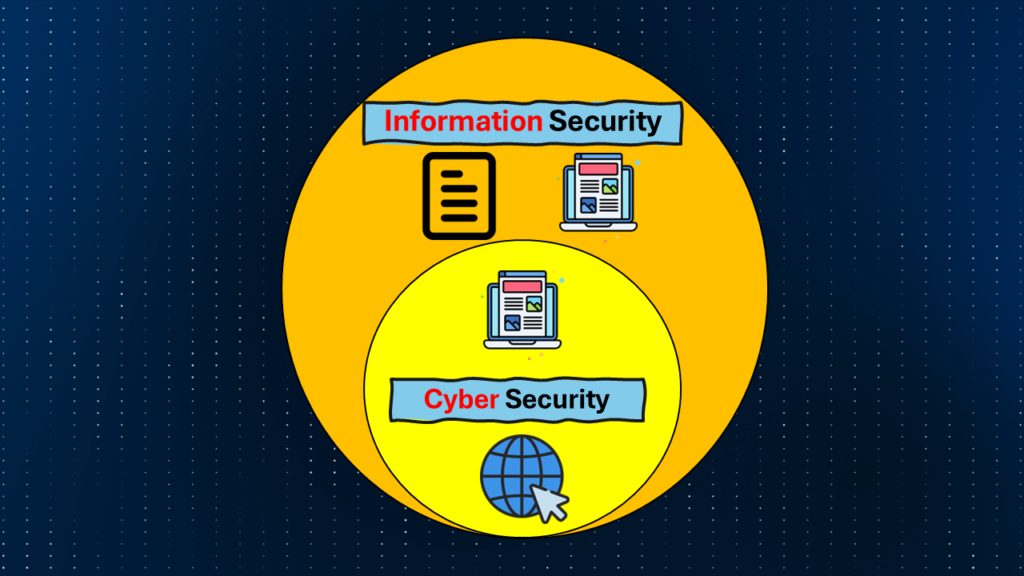Information Security and Cybersecurity are two terms often used interchangeably, but they do have different meanings. Don’t worry, we’ve got you covered!
What Is Information Security?
Information Security is the practice of safeguarding data in all its forms, whether digital or physical. Its primary goal is to ensure the confidentiality, integrity, and availability of information. Here are some key points about information security:
- Scope: Information security covers all types of information, regardless of the medium (paper, digital, etc.). It includes protecting sensitive data, trade secrets, personal information, and more.
- Examples of Controls:
- Procedural Controls: Policies, guidelines, and procedures that govern how information is handled.
- Access Controls: Managing who can access specific information.
- Technical Controls: Implementing security measures such as encryption, authentication, and authorization.
- Compliance Controls: Ensuring adherence to legal and regulatory requirements.
- Protection: Information security protects against unauthorized access, disclosure, modification, or destruction of data.
What Is Cybersecurity?
Cybersecurity is a subset of information security that specifically focuses on defending against online threats. It deals with protecting data in electronic form from cyber attacks. Here are some key points about cybersecurity:
- Scope: Cybersecurity is concerned with safeguarding anything in the cyber realm, which includes digital devices, networks, and systems. Examples of cybersecurity domains include:
- Network Security: Protecting network infrastructure from attacks.
- Application Security: Securing software applications.
- Cloud Security: Ensuring the security of cloud-based services.
- Critical Infrastructure Security: Protecting essential services like power grids and transportation systems.
- Threats: Cybersecurity deals with dangers in cyberspace, such as hacking, malware, phishing, and denial-of-service attacks.
- Protection Measures:
- Firewalls: Defend against unauthorized access.
- Antivirus Software: Detect and remove malicious software.
- Intrusion Detection Systems: Monitor network traffic for suspicious activity.

Securityforyou.in
The Similarity:
Both fields share the common objective of protecting data. Whether it’s safeguarding sensitive information on paper or securing digital data, both information security and cybersecurity aim to prevent unauthorized access, use, disclosure, disruption, modification, or destruction.
Keeping Your Data Safe: Practical Tips
Now that you understand the importance of information security and cybersecurity, here are some practical steps you can take to keep your data safe:
- Implement strong passwords and update them regularly.
- Be cautious about clicking on links or opening attachments in emails, especially from unknown senders.
- Install and maintain reputable antivirus and anti-malware software.
- Back up your data regularly.
- Be mindful of what information you share online.
By following these tips and understanding the roles of information security and cybersecurity, you can take control of your data and protect yourself in our increasingly digital world.
In summary, think of information security as the big umbrella that covers all types of information, while cybersecurity is a specific tool under that umbrella, designed to protect electronic data and systems in the cyber world.
====================================================================================================================================